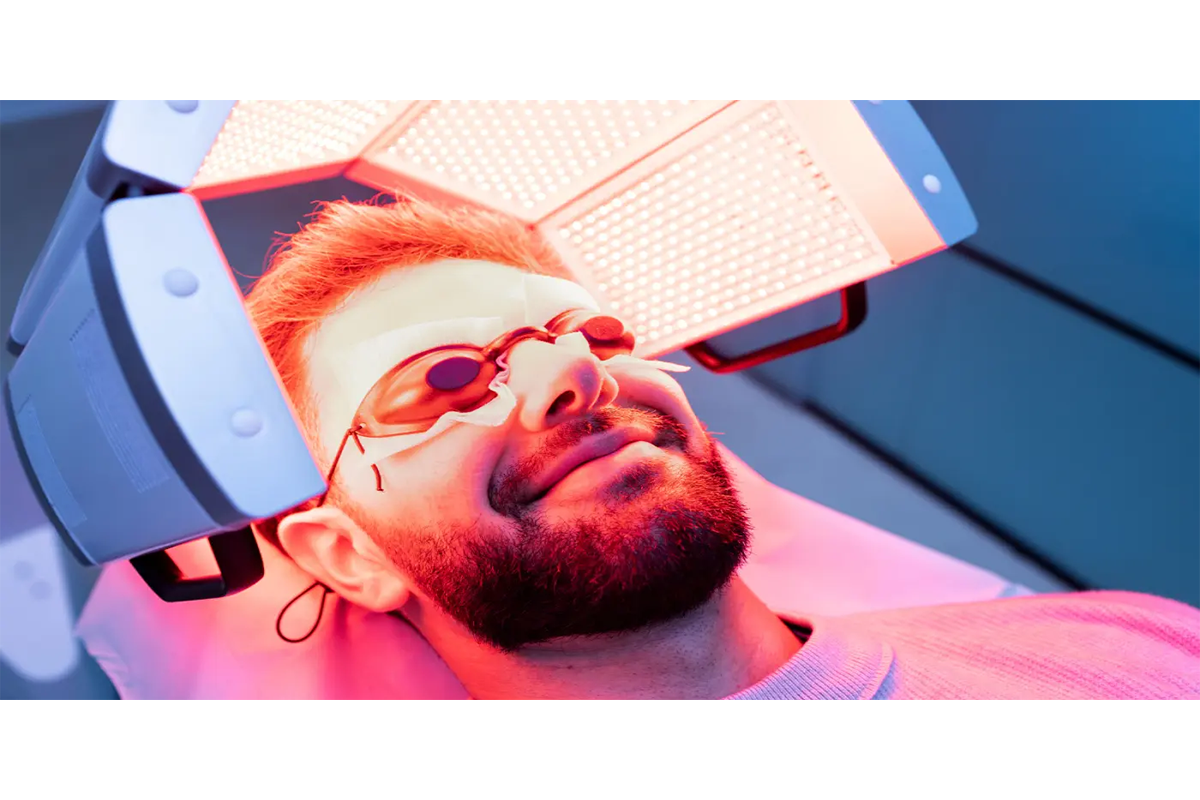
In recent years, LED (Light Emitting Diode) light therapy has emerged as a versatile, non-invasive modality for addressing a spectrum of skin conditions and enhancing overall dermal health. From tackling acne to combating signs of aging and even aiding wound healing, LED therapy leverages distinct wavelengths of light to stimulate cellular processes, offering an accessible treatment for clinical and at-home users alike.
LED therapy operates on the principle that specific light wavelengths penetrate skin layers to different depths, interacting with chromophores—molecules such as porphyrins and cytochrome c oxidase—to modulate cellular function. Blue light (415–450 nm) predominantly targets Propionibacterium acnes bacteria within sebaceous follicles, exerting antibacterial effects and reducing sebum production. Red light (630–700 nm) penetrates deeper, promoting collagen synthesis, dampening inflammation, and accelerating tissue repair. Near-infrared light (700–1200 nm) reaches subdermal layers to further enhance vascularization and alleviate pain.
Acne vulgaris, driven by follicular hyperkeratinization, bacterial colonization, and inflammation, affects up to 85% of adolescents and persists in many adults. Traditional treatments range from topical retinoids to systemic antibiotics, each carrying potential side effects like dryness, antibiotic resistance, or photosensitivity. Blue LED light therapy offers an alternative by inducing photochemical porphyrin excitation in P. acnes, generating reactive oxygen species that selectively destroy bacteria without harming surrounding tissues. Clinical trials have demonstrated significant reductions in inflammatory lesions after biweekly blue light sessions, with minimal adverse reactions.
As skin ages, collagen and elastin levels decline, leading to wrinkles, loss of elasticity, and uneven tone. Red LED light stimulates fibroblast proliferation and gene expression linked to extracellular matrix synthesis. Through photobiomodulation, red light increases ATP production, fueling reparative pathways that thicken the dermal layer, smooth fine lines, and enhance skin firmness. Multiple randomized studies report marked improvements in skin texture and reduction of wrinkle depth following regular red light treatments, rivaling results seen with fractional laser resurfacing but without downtime.
Near-infrared LED therapy extends benefits to deeper tissues, making it useful for accelerating wound closure and mitigating pain. By modulating inflammatory mediators and promoting angiogenesis, near-infrared light supports granulation tissue formation and re-epithelialization in surgical wounds, scars, and chronic ulcers. Additionally, its analgesic effects—attributable to reduced nerve conduction velocity and endorphin release—offer relief for musculoskeletal discomfort, arthritis, and post-exercise soreness.
LED light therapy has found a home in dermatology and aesthetic practices worldwide.
Dermatology Clinics:Acne, psoriasis, and eczema management.
Medical Facilities:Post-operative wound care and pain management.
Aesthetic Spas:Skin rejuvenation, pigmentation correction, and non-ablative resurfacing.
Home Devices:User-friendly panels, masks, and handheld units empower self-treatment.
LED therapy is remarkably safe, with adverse effects confined to transient redness, dryness, or mild irritation in a small fraction of users. Unlike ultraviolet phototherapy, LED wavelengths do not carry carcinogenic risk, making chronic usage viable. To maximize safety, practitioners and consumers should adhere to manufacturer guidelines regarding exposure times and contraindications—particularly in individuals with photosensitive conditions or on photosensitizing medications.
Effective LED therapy depends on selecting appropriate wavelengths, treatment durations, and scheduling intervals. Standard regimens involve sessions of 10–20 minutes per wavelength, two to three times weekly over several months. Emerging devices feature multi-wavelength arrays that combine blue and red light, offering synergistic antimicrobial and regenerative effects in a single session. Integrating skincare products—such as antioxidants or peptides—post-treatment can further enhance outcomes by leveraging temporarily increased skin permeability.
Advancements in semiconductor materials, miniaturization, and wearable designs are accelerating the evolution of LED therapy. Flexible light-emitting textiles, smartphone-controlled masks, and AI-driven dosing algorithms promise personalized, data-driven skincare regimens. Furthermore, research into novel wavelengths—such as 810 nm for hair regrowth or 520 nm for melasma treatment—is expanding the therapeutic horizon of LED phototherapy.
While LED treatments offer powerful benefits, they are most effective when combined with comprehensive skin health strategies: balanced nutrition, sun protection, stress management, and judicious use of topical actives. Collaborative care between dermatologists, aestheticians, and patients ensures optimized, individualized treatment plans that harness LED therapy’s full potential.
LED light therapy stands at the forefront of non-invasive medical and cosmetic dermatology, offering scientifically grounded solutions for acne, aging, wound healing, and pain relief. Its accessibility, safety, and broad applicability make it an indispensable tool for clinicians and consumers alike. As technology advances, LED photobiomodulation is set to become an integral component of personalized, evidence-based skin health regimens worldwide.